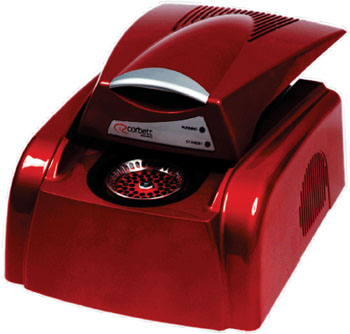
Isolated colonies of Escherichia coli NCCP14038, Salmonella Typhimurium NCCP11116, and Staphylococcus aureus ATCC27664 were inoculated into 10 mL tryptic soy broth (TSB Becton, Dickinson and Company, Sparks, MD, USA) and incubated at 37☌ for 24 h. monocytogenes in golden needle mushrooms with Tm values in the melting curve of qPCR analysis. Therefore, this study developed the method to detect L. Tm is defined as the temperature at which 50% of the DNA amplicon is in a double-stranded configuration. Thus, the specificity of the reaction is determined by the melting temperature (Tm) of the amplicon. Melting curve analysis in qPCR was first introduced to characterize PCR products in 1997 and the amplicons of different species with different lengths and different guanine (G) and cytosine (C) contents melted at various temperatures. Thus, when multiple species of DNA are amplified, it is difficult to distinguish which C T value was the value we want. The presence of multiple DNA species in the same reaction can give rise to multiple peaks in the melting curve, typically indicating the presence of contaminating or off-target amplification products. However, it was challenging to get the C T value for the golden needle mushroom because of the microflora and food matrix. monocytogenes detection method combining preenrichment and qPCR to improve a detection limit. Among the available chemistries for qPCR, intercalating dyes such as SYBR Green are mostly used due to universal applicability because of low cost. qPCR is such technology that may allow the rapid and quantitative detection of pathogens with high specificity and sensitivity. These molecular detection methods can provide information about the composition of food products as well as pathogens in food. monocytogenes include PCR, quantitative real-time PCR (qPCR), and multiplex qPCR. Molecular detection methods developed for L. Thus, more advanced, sensitive, and rapid microbial detection methods need to be developed to complement or replace the conventional culture-based procedures. This procedure may take 4-5 days to obtain results. monocytogenes detection method follows the sequence of preenrichment, selective enrichment, and isolation on selective media. Thus, the regulations in many countries have a zero-tolerance policy for L. monocytogenes is higher than that of other foodborne illnesses.
.jpg)
monocytogenes is a Gram-positive zoonotic pathogen that causes listeriosis, which can be severe or fatal, in the immunocompromised, including pregnant women, newborns, and elderly.

monocytogenes after eating golden needle mushrooms in the United States, and 31 people were hospitalized, and 4 died in California, Hawaii, and New Jersey. However, there were Listeria monocytogenes infections associated with the consumption of the golden needle mushrooms. They are popular in East Asia and known as Enokitake or lily mushrooms. Golden needle mushrooms are long thin white mushrooms. monocytogenes in golden needle mushrooms. These results indicate that the Tm value in the melting curve of qPCR can be used to detect L. monocytogenes colonies were detected in CHROMagar. Of the samples that were positive with the Tm value of qPCR, but negative with the conventional detection method, 4 samples were selected randomly, and typical L. monocytogenes positive using the conventional detection method.

monocytogenes positive with Tm value of qPCR, but only 13 samples (37.1%) of 35 samples were L. From 35 golden needle mushrooms, 26 samples (74.3%) were L. monocytogenes were observed with other bacteria. The samples that showed the negative result in the conventional method were subsequently examined with the Tm value of qPCR. monocytogenes presence determined by Tm values were compared with the results from a conventional detection method (culture-based procedures). For identical samples ( n = 35), the results for L. This study developed a method to determine Listeria monocytogenes presence in golden needle mushrooms by melting temperature (Tm) in a melting curve of qPCR.


 0 kommentar(er)
0 kommentar(er)
